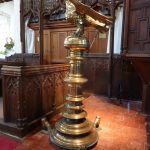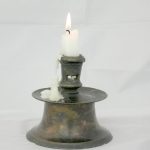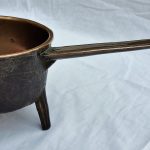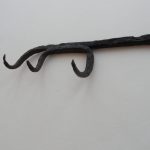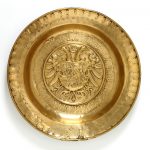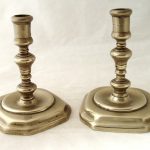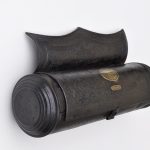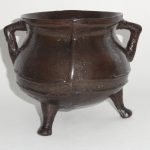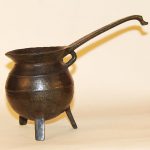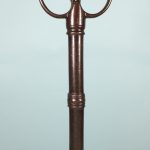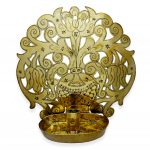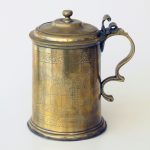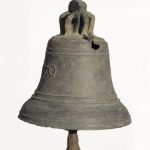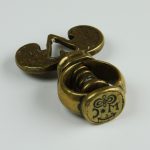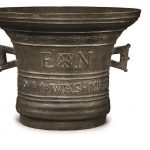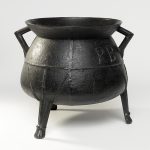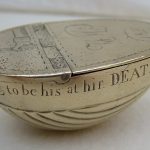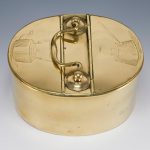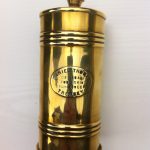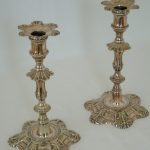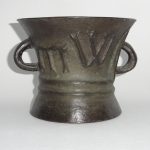Continental Cauldron
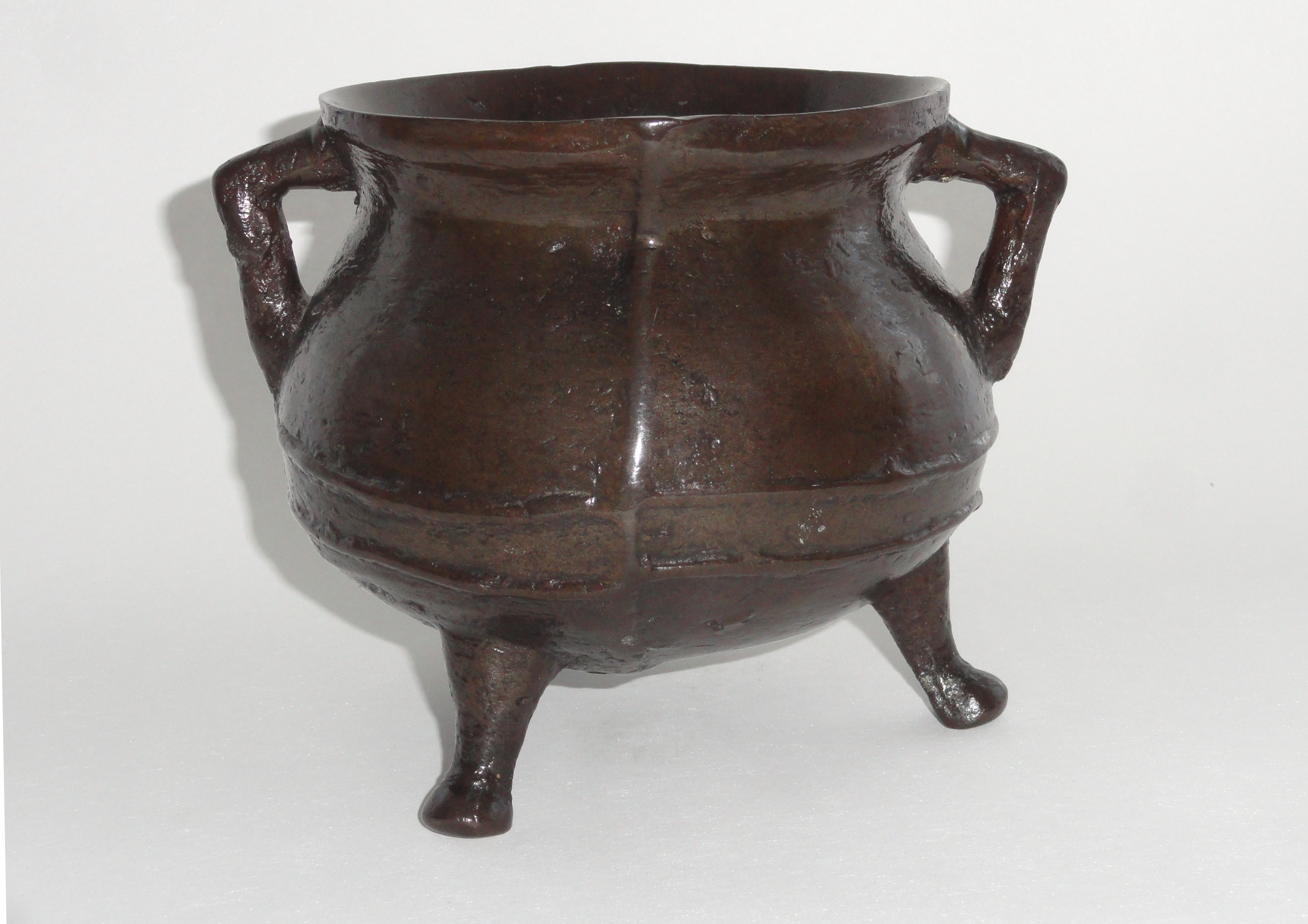
Materials: leaded bronze.
Dimensions: height 15.25 cm / 6 in, diameter 13.5 cm / 5 ¼ in.
Place of Origin: Low Countries.
Date: circa 1660.
Maker: unknown.
Present Location: private collection.
Explanation
Unlike the “bag” shaped body form usually associated with English examples, this cauldron has a more globular shape that is usually typical of cauldrons manufactured in the Low Countries during the later half of the 17th century. It has an everted, or upwardly flared, rim that terminates with the sharp edge flattened off vertically. Unfortunately there are no scratch or other marks that can provide a positive identification.
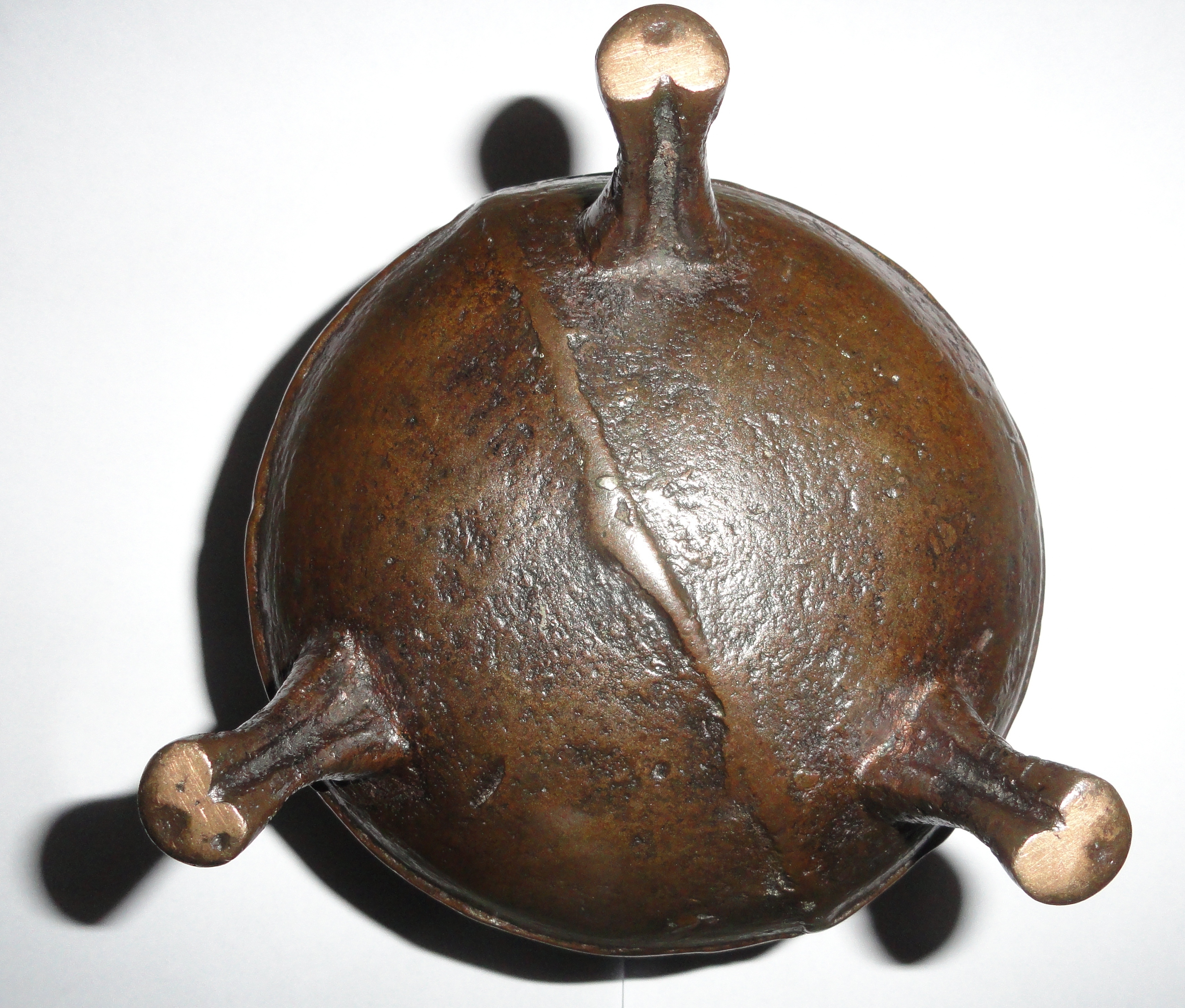
A flash line vertically surrounds the body, from rim to rim and underneath, that indicates the cauldron was cast in two halves. It also has two decorative wires cast horizontally into the lower body to form parallel lines that do not exactly align at the flash line. Although many early cauldrons were cast without legs, this example is supported by three splayed legs that are slightly inset. There are no seams in evidence on the body surrounding the legs or lugs, or on the legs and lugs themselves, so these were probably part of the primary mould and formed using a “lost wax” process of some kind. The legs are of a tapering “D” section and formed so that they terminate in stylised animal hooves.
Cauldrons, the mainstay of cooking for many generations, have been used for many hundreds if not thousands of years. Excavations from the early 7th century Sutton Hoo burial cemeteries show, for example, a cauldron of riveted sheet metal construction. Evidence of even earlier use of cauldrons may be found from the Bronze/Iron age. Cast metal cauldrons really came into more common use during Medieval times when methods of production became more reliable and sophisticated.
References:
Rupert Gentle and Rachel Field, 1994, Domestic Metalwork 1640 – 1820.
Robert Deeley. 2011, The Cauldron, The Spit & The Fire (How we cooked until the end of the 19th Century).
Roderick Butler and Christopher Green, 2003, English Bronze Cooking Vessels & Their Founders 1350 – 1830.

